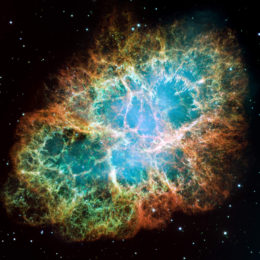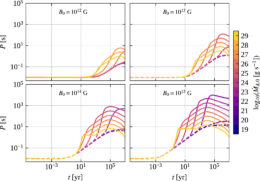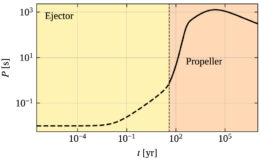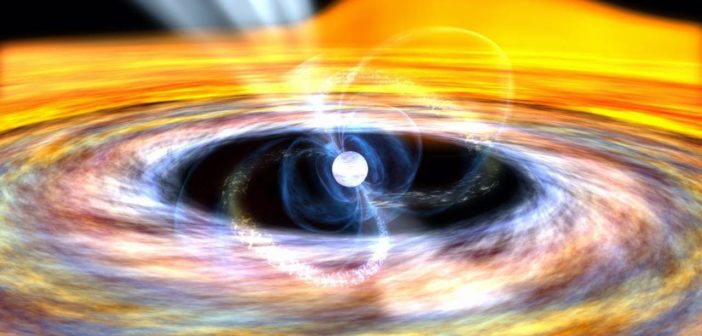Pulsars are one of the most complex and mysterious objects in the universe; astronomers thought they had an answer to how and why pulsars lose energy and spin slower over time…but recent discoveries have made them rethink their current theories.

An example of a pulsar in a supernova remnant; the Crab pulsar emits energy that lights up the Crab Nebula, both of which were formed in a supernova that occurred in the year 1054. [NASA, ESA, J. Hester and A. Loll (Arizona State University)]
A Lack of Long-Period Pulsars
Deep inside the gas and dust of some supernova remnants, you’ll find a pulsar: a neutron star with a magnetic fields 100 million times Earth’s and a density so high that a teaspoon of matter would weigh as much as Mount Everest. Pulsars emit radio radiation and rotate rapidly; their spin periods generally fall between 2 milliseconds and 12 seconds. Puzzled by the lack of pulsars with rotation periods longer than 12 seconds, some astronomers have hypothesized that pulsars can no longer emit radio radiation when their rotation periods exceed a certain limit. Other researchers believe that our observing methods are biased toward pulsars with shorter periods.
However, recent discoveries of long-period pulsars with spin periods of 14 seconds, 23 seconds, and 76 seconds (and also a radio transient with a period of 1,091 seconds) have challenged these ideas and made astronomers rethink their models. How were these pulsars with long spin periods formed? A team led by Michele Ronchi at Spain’s Institute of Space Sciences and the Institute of Space Studies of Catalonia has proposed that it may have something to do with accretion from their parent supernovae.

The period and age of pulsars plotted for different initial magnetic field strengths and supernova disk fallback rates. [Ronchi et al. 2022]
The Low-Down on the Slow-Down
After their births in supernovae explosions, pulsars “spin down” over time as they lose energy through magnetic dipole radiation and their magnetic fields decay. However, it’s not clear that these processes alone can account for the few pulsars we see with very long spin periods. The team postulates that the long rotation periods seen in these pulsars might have been caused by material from the supernova falling back onto the neutron star and forming a disk, which will affect the spin rate of the pulsar. This would happen soon after a neutron star’s formation, and the amount of mass and the accretion rate would depend on the progenitor star’s mass and the dynamics of the supernova.

An example of the time evolution of the period of a pulsar. The two shaded boxes represent different phases of the accretion process. [Adapted from Ronchi et al. 2022]
Age Affects Accretion
The team performed simulations to understand how the spin period of a pulsar evolves over time, varying the initial magnetic field of the pulsar and the accretion rate to see if periods as long as 76 seconds are obtainable. They found that for newborn neutron stars with magnetic fields on the order of 1014–1015 G and moderate accretion rates, young long-period pulsars are possible. In neutron stars with lower initial magnetic fields, on the order of 1012 G, accretion from a fallback disk, if it is present, would have little effect. Therefore, the spin-down would be caused by magnetic dipole radiation alone, and the resulting pulsar’s period would be no longer than ~12 seconds.
Studying the mechanisms that lead to long-period pulsars could also help us understand other periodic transient events, like fast radio bursts. New radio surveys with powerful instruments such as the Low Frequency Array (LOFAR) and MeerKAT may find more of these long-period objects and put the team’s theories to the test.
Citation
“Long-period Pulsars as Possible Outcomes of Supernova Fallback Accretion,” Michele Ronchi et al 2022 ApJ 934 184. doi:10.3847/1538-4357/ac7cec
